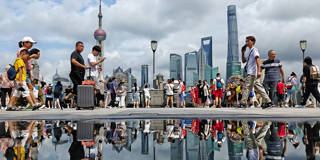
Humanizing the US-China Relationship
The US and China must work through many differences, which will not happen overnight. In the meantime, the escalating tensions between their governments make it more important than ever to preserve in-person interactions between ordinary Chinese and Americans.
HONG KONG – On a recent trip to China with my Northwestern Kellogg students, we were all struck by how few Americans had returned to the country since the end of its zero-COVID policy in December 2022.